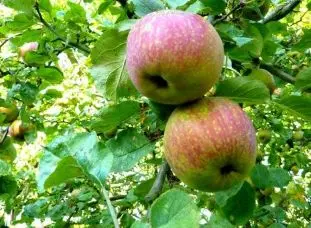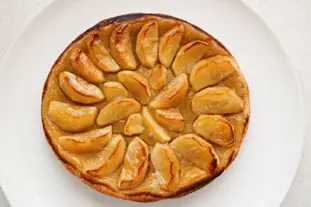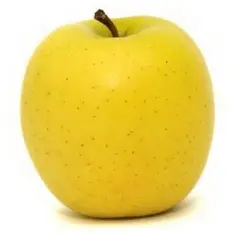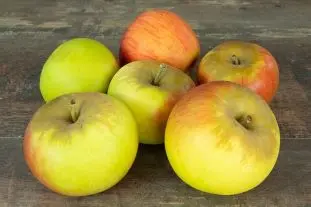The peak of the apple season

As I write these lines, we are in the middle of the apple season, and it's an apple year, as you may have noticed if you have apple trees around you, they are bursting with fruit!
Excellent news for the people in the west of France in particular, but let's have a little thought for those in the east where it's a completely different story, the late spring frost has done a lot of damage, an almost blank year for apples and other fruits in some regions.
Excellent news for the people in the west of France in particular, but let's have a little thought for those in the east where it's a completely different story, the late spring frost has done a lot of damage, an almost blank year for apples and other fruits in some regions.
9,223 5/5 (13 reviews)
Keywords for this post:ApplesSeasonGoldenApple peelerTasteLast modified on: October 23th 2021
The peak of the apple season

So, let's go for all kinds of recipes: cakes, pies, compotes, baked, etc. It's delicious, and it can be used with all varieties of apples, which are often called in french "knife apples" to differentiate them from "cider apples".
In France, there are probably as many varieties of apples as there are cheeses, some of which are very well known, such as "golden", "reinette", "granny-smith" etc. And others much less well known and often very local, like the "reinettes d'Armorique", "calville", "belle fille normande", etc.
Of course, they are generally not very popular, you will hardly find them in supermarkets, but you can find them on the markets or with local producers, or with enthusiasts, who try to maintain (with difficulty) this greedy heritage.
As far as apples and recipes are concerned, in cooking and pastry-making, there are no rules, you can use any apple in any recipe, in theory... In practice it is a bit more delicate, and here are some points that deserve your attention:
- It's always good to remember, apples are overall quite fragile and susceptible to insect attack, so it's perfectly normal to have fruit that's a bit stained, a bit ugly, and not at all like the apples in the shiny, smooth, perfectly round in commercials. Surface imperfections are a sign of a lack of chemical treatments, and therefore a good sign, whereas a fruit that is "too" beautiful, especially with those stupid individual sticker labels, is always a bit fishy in my eyes. Long live ugly apples!
- Some apples don't do well with baking, granny-smiths for example, but that's almost an exception, and not an absolute rule either.

In my opinion, this is the apple to avoid, and to turn to more typical apples, which are much better in taste and health.

- Whatever the recipe you are going to make, compote, tart or other, it is always very interesting to mix several varieties, rather sweet with rather sour for example. The taste will vary as you eat a pie or a cake, you will be pleasantly surprised by the result.
- The taste of apples changes with time, generally more pronounced, a little more acidic after the harvest, and softening with time.

In summary: Make the most of the apple season, opt for local varieties if you can find them, avoid golden ones and invest in an apple peeler if possible and... eat apples!
Lasts posts
Butter vs. grease
We often read in a recipe where a pastry is put into a mould that, just before pouring, the mould should be buttered or greased. But what's the difference between these 2 terms?December 1st 20259935
Getting out of the fridge early
Very often when you're cooking, you need to take food or preparations out of the fridge, to use them in the recipe in progress. There's nothing tricky about this: you just take them out of the fridge and use them, usually immediately, in the recipe. But is this really a good method?November 24th 20251,1255
Who's making the croissants?
When you look at a bakery from the outside, you naturally think that in the bakery, the bakers make the bread, and in the laboratory, the pastry chefs make the cakes. It's very often like that, with each of these professions having quite different ways of working, but sometimes there's also one...November 23th 20251,018
Oven height
When we put a dish or cake in the oven, we naturally tend to put it on the middle shelf, and that's what we usually do. But in some cases, this position and height can be a little tricky, so let's find out why.October 8th 20252,7605
The importance of sieving
In recipes that use a fine powder (flour, powdered sugar, etc.), you'll often see the advice to sift before using it. To sift is to pass the powder in question through a sieve (a very fine strainer) before incorporating it into your recipe. It's often advice, but is it really useful?September 3rd 20257,5343
Other pages you may also like
Butter doesn't make you fat, unless you eat too much of it.
Whenever I'm discussing cooking and recipes, there is one idea which comes up frequently, like this: "Oh no! But that's got butter in it" (I should add, for the sake of accuracy, that this is something I hear more frequently from women, who are almost all concerned with keeping their figure). ...March 26th 201245 K4.5
The right way to use a blender
You may well have a blender in your own kitchen. You know, that useful gadget that allows you to liquidize stuff at high speed into a smooth liquid. Of course, the most obvious use that comes to mind is for soups: if you have boiled some vegetables in water, with just a quick blast of the blender,...May 31th 201724 K5
Rosemary in recipes
Rosemary, as I’m sure you know, is a culinary herb, one of the famous French "herbes de Provence", and is very effective in bringing a real taste of the Mediterranean to any dish. The classic way to use it in a recipe is to add a sprig or two and leave it in during cooking as a way of...April 18th 201824 K4.7
The march forward
When professionals get to work in their kitchen, lab or bakery, they are (if they are conscientious) very sensitive to hygiene and cleanliness. It is impossible for a good baker for example to do a day's work without regularly cleaning the table where he or she works, and it is even more...June 30th 202120 K5
The bitterness of endives
As I write these lines, we are entering the endive season, and if you like it, it's time to enjoy it, if possible with your local producers. Endive is good, but the reproach that is often made of it, and children in particular, is: "It's bitter! And it is (somewhat) true of course, endives...February 9th 201914 K4.9
Post a comment or question
Follow this page
If you are interested in this page, you can "follow" it, by entering your email address here. You will then receive a notification immediately each time the page is modified or a new comment is added. Please note that you will need to confirm this following.
Note: We'll never share your e-mail address with anyone else.
Alternatively: you can subscribe to the mailing list of cooling-ez.com , you will receive a e-mail for each new recipe published on the site.









